Pew: Trump has lost 30% of his young 2024 voters | Weekly roundup for August 17, 2025
Plus: Sherrod Brown jumps into the Ohio Senate race; interviews with working-class voters; the BLS takeover; and more.
Dear readers,
Greetings from a family gathering this weekend in the Pacific Northwest. It’s rainy, so a good time to write out this post. This week’s focus: new data on young Trump voters from Pew.
As always, if you have thoughts, or other data to send around/a story of yours for me to feature, my email is contact@gelliottmorris.com.
Pew finds just 70% of Trump’s young voters approve of the job he is doing as president
For comparison, he started out at 95% approve with the 18-34 year-olds who voted for him:
Pew looks at the crosstabs of their Trump approval rating data (47% among all adults at the start of his term, 38% today) and concludes:
Trump’s rating has slipped more among his younger voters than among older adults who cast their ballot for him.
A few weeks into his presidency, Trump’s job approval rating among those who voted for him varied little by age. Nine-in-ten or more Trump voters under 35 approved of his job performance, as did similar shares of those in older age groups.
Today, Trump’s rating remains overwhelmingly high among his voters ages 50 and older. But it has slipped considerably more among his youngest voters: 69% of Trump voters under 35 now approve of his job performance, down 23 points from the start of this term.
Today about a third of the young people who voted for Trump do not approve of his presidency.
Pew finds that opposition to Trump’s agenda is particularly high on tariffs (61% oppose, 38% support) and the GOP’s OBBBA budget bill (46% oppose, 32% support, 23% not sure). A 17-point plurality of adults say the budget bill will hurt their family.
I first noted Trump’s decline with young voters in April. Back then Trump’s approval with voters ages 18-29 had slipped to net -27, even though Trump only lost voters under 30 by 4 percentage points. Compared to his performance in 2024, young people are driving the lion’s share of Trump’s low polling numbers today.
The Pew finding is notable for what it says about the policy preferences and ideology of young people. By and large, young people do not hold conservative policy preferences, but are very sensitive to changes in the cost of living (housing is expensive and new grads don’t get paid well).
Compared to older voters, young Americans also have very loose partisan attachments (they are the most likely to rate the two parties poorly, or say they are political independents).
When Trump won over more young voters from 2020 to 2024, I pointed to these characteristics as evidence they may not stick around with Trump that long — and that their votes for him were not evidence that they supported his agenda. The Pew poll suggests this was the right take. On social media Saturday, I linked to the Pew poll and wrote “For a lot of young people, voting for Trump in 2024 wasn’t about supporting Trump.” It was about voting against the status quo.
Now, Trump is the status quo. Young people — including many young Republicans — are moving against him.
What you missed at Strength In Numbers
Subscribers to Strength In Numbers received 4(!) articles over the last week (five if you count this one):
Our new database analyzing the electoral skill of U.S. House representatives since 2000:
A discussion of link between moderation and WAR, which is (a) small and (b) completely swamped by uncertainty about the national environment and other factors that influence House elections.
A look at Trump’s approval rating on inflation and the economy, and a comparison to Joe Biden’s numbers during peak inflation in 2022-23:
And finally, last week’s data roundup, focused on gerrymandering:
If you’d like to receive more subscribers-only posts and support independent data-driven journalism, become a paying member of Strength In Numbers today. Prorating the cost of a subscription over the monthly number of posts we publish, paying members effectively get each of these articles for 50 cents each. Your support means a lot to us!
Even more numbers!
A collection of links from the last week:
Reporting indicates Sherrod Brown will jump into the 2026 Ohio Senate race. I think a message focused on affordability and the loss in manufacturing jobs under Trump could resonate. Inside Elections moved the race from Safe to Lean Republican.
Also from Pew this week: So much for government “efficiency.”
The New York Times published a series of interviews with working class voters around the country. The headline is “These Are the Voters Who Should Scare Democrats Most” but the voters interviewed are not Democrats, they mostly say they’re up for grabs. Again, a running theme of these interviews is affordability. Democrats are also seen as too old.
Trump’s new head of the BLS lacks qualifications, according to the Wall Street Journal. E.J. Antoni was also caught on footage of rioters at the Capitol on Jan. 6.
Alcohol consumption is at an all-time low, according to Gallup.
Jobs that are at more risk of being replaced by AIs are not being mass-automated away yet, according to Noah Smith’s analysis of jobs data. Well that makes me scared for what the tech jobless rate will be once AGI does start to replace people.
A new study finds that emotional byproducts of political polarization (overgeneralizing, emotional reasoning, dichotomous thinking) all increased from 2016 to 2020, further evidence our social fabric is fraying. We’re all spending too much time on Twitter and not enough time reading articles from America’s great services exporters writing here on Substack!
Finally, the polling company Ipsos announced this week it is partnering with Stanford to use large language models to predict responses in public opinion surveys — research that could eventually be used to create a low-cost “survey” product for clients. The way this works is that Ipsos will use demographic (and other?) data about humans enrolled in its KnowledgePanel to feed into a LLM and extract the text answers the AI “thinks” are most likely… instead of, you know, just ask people what they think. I think this is a huge mistake, and I have a research white paper coming out on this subject this week.
Updates from the data portal
Trump approval: Trump approval has hit a new low this week, of 41.7%:
Trump issue approval: The president is flirting with a -25 rating on prices and inflation:
House generic ballot average: Democrats above a 3-point lead now in the House popular vote polling:
The economy: Our economic index fell over the last month, as inflation, job growth, services spending, and housing construction have fallen below average.
The charts on the data portal update every day. Feel free to use and cite them liberally!
That’s it for your major political data stories this week.
Got more for next week? Email your links or add to the comments below!
Have a nice week,
Elliott



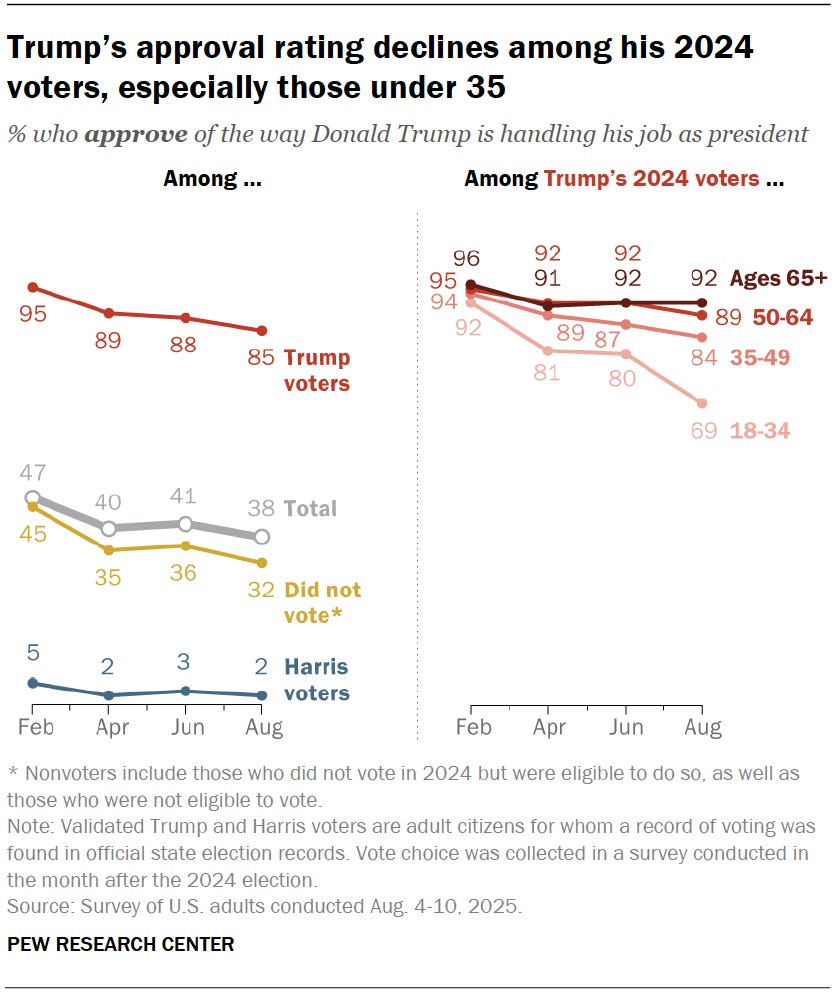
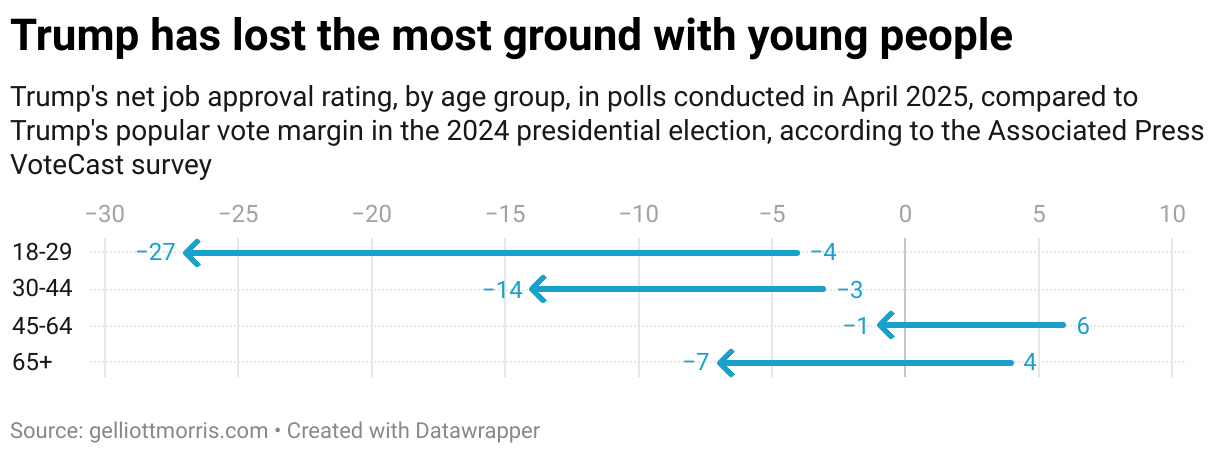
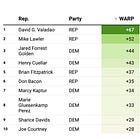
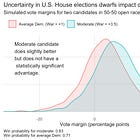
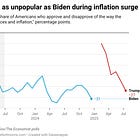
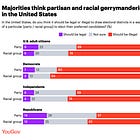
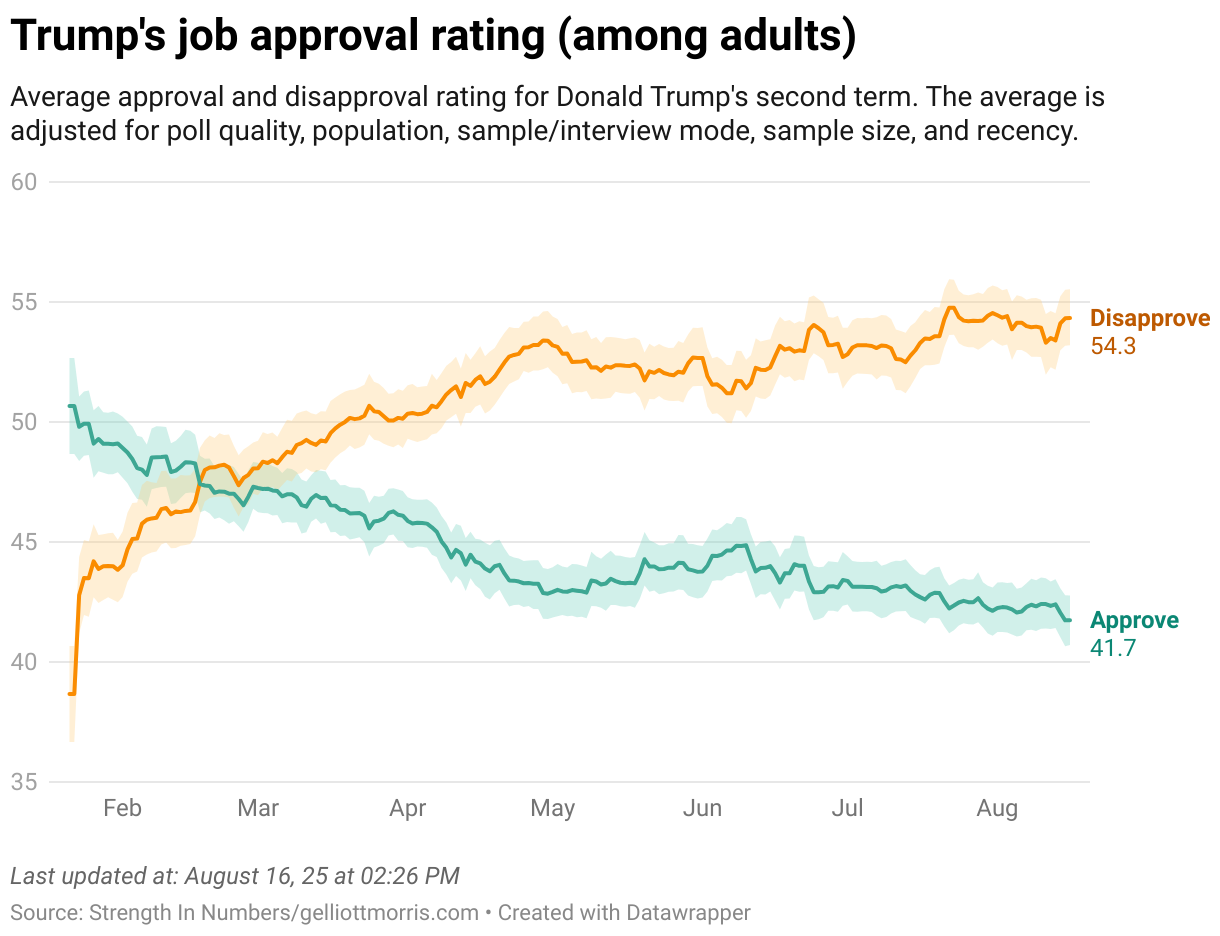
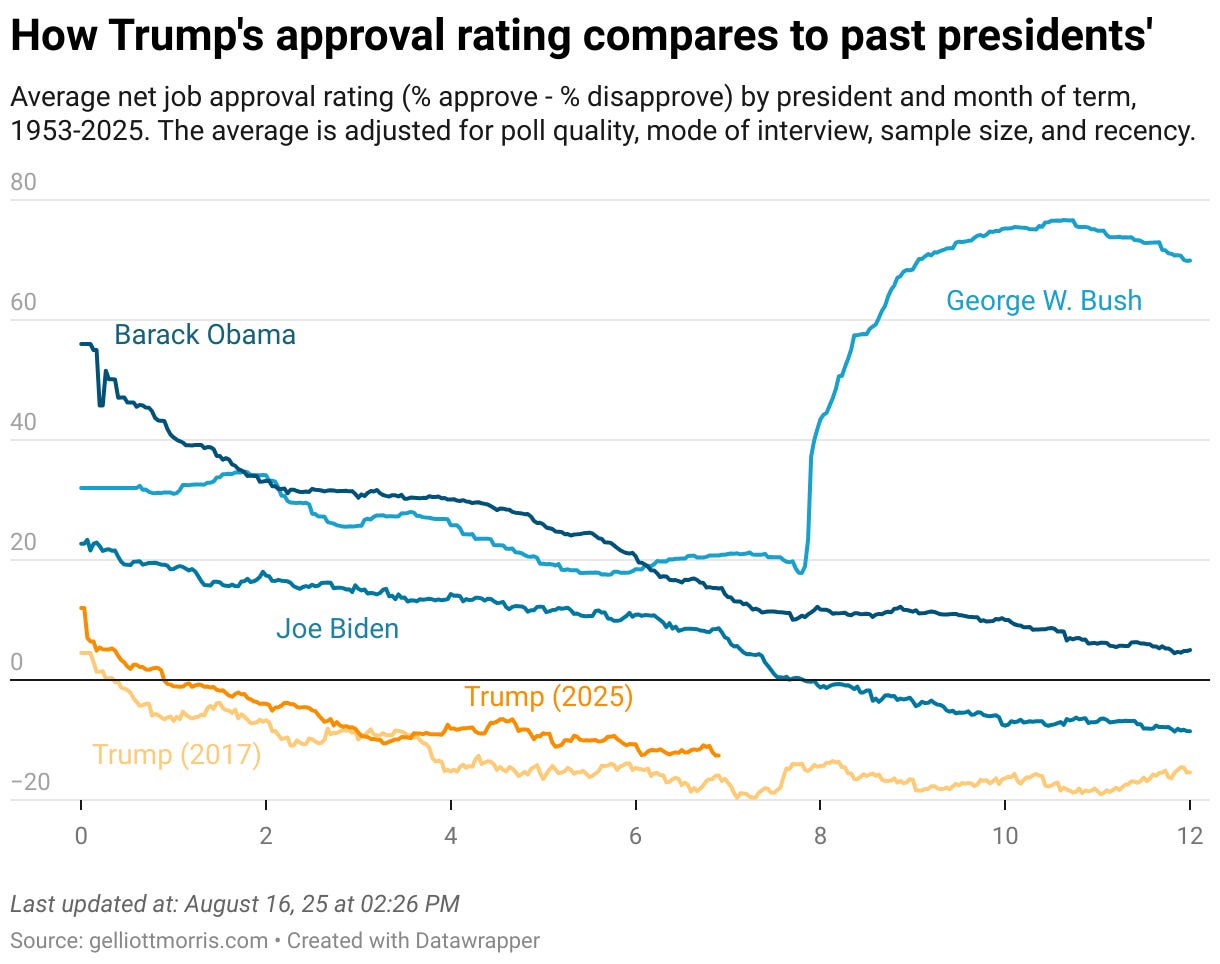
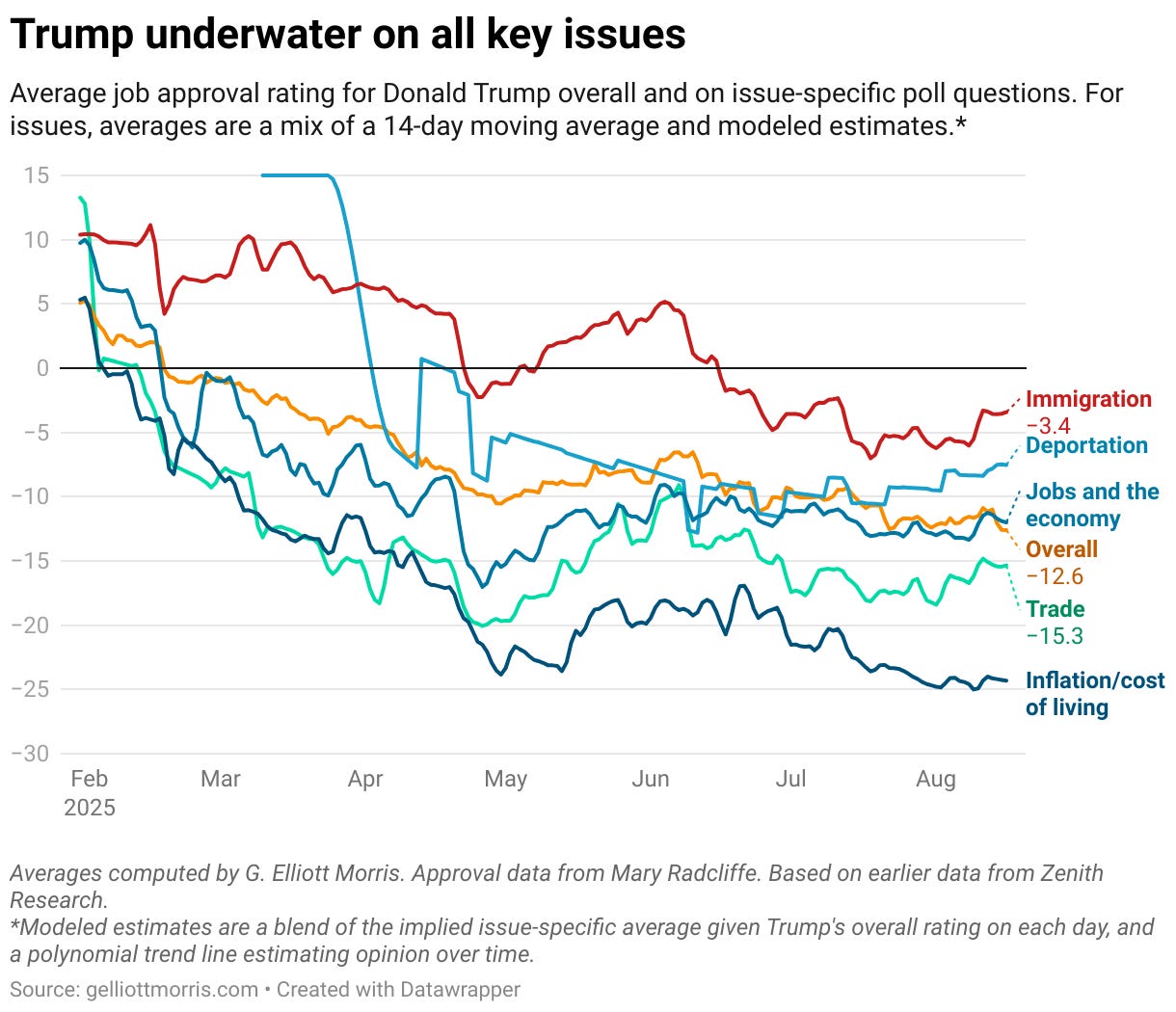
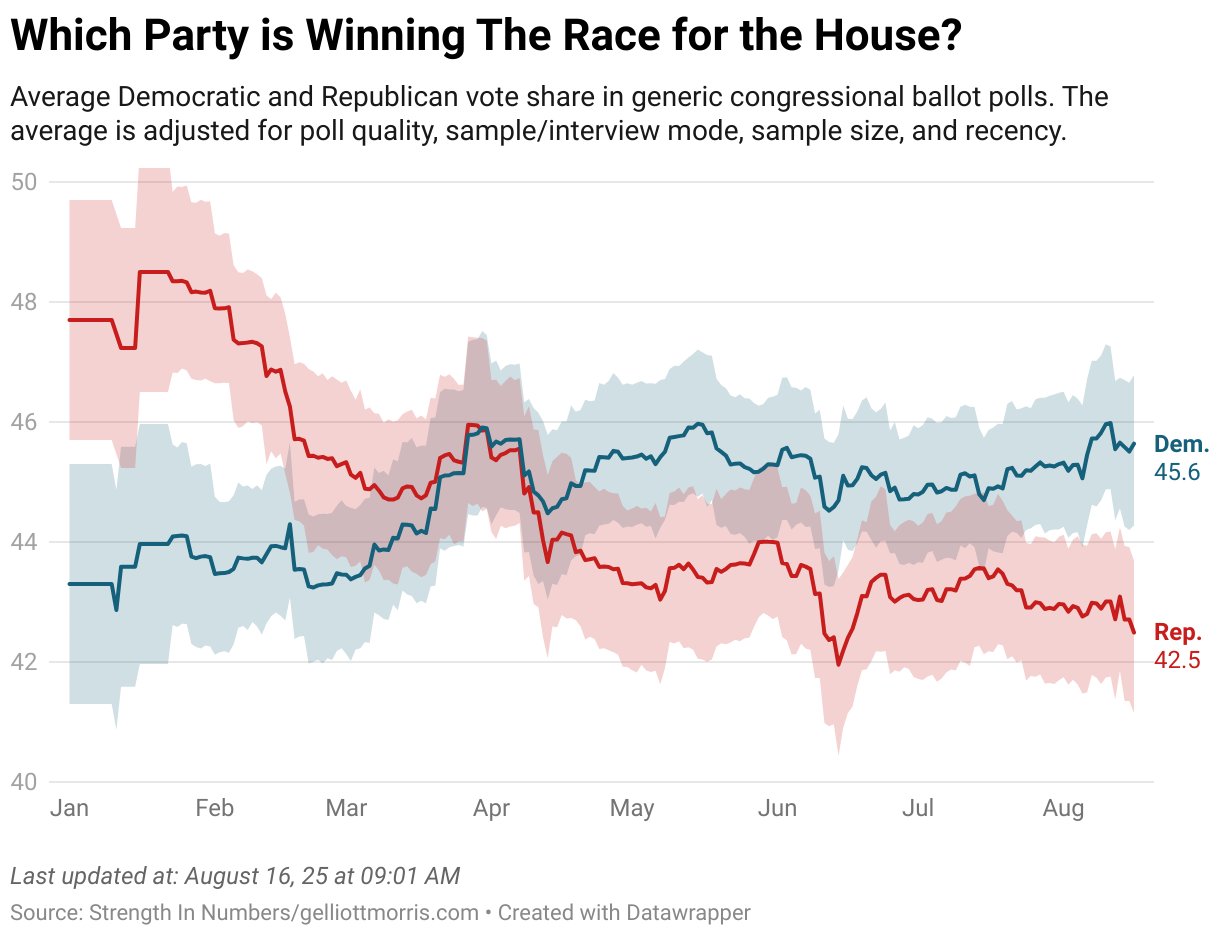
"...Ipsos will use demographic (and other?) data about humans enrolled in its KnowledgePanel to feed into a LLM and extract the text answers the AI 'thinks' are most likely… instead of, you know, just ask people what they think."
Dangerous. Reminds me of Asimov's Multivac computer that figured out election results without anyone having to vote.
Ohio is lucky to have Sherrod Brown back. I hope they're smart enough to realize it.